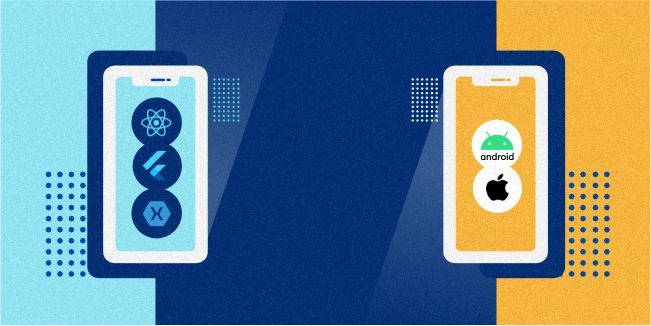Introduction
Mobile platforms serve as the foundation for app development, enabling developers to create applications tailored to specific operating systems or across multiple systems simultaneously. In this document, we explore the three primary approaches: Android, iOS, and cross-platform development. Each has its unique features, tools, advantages, and limitations.
1. Android Platform
Overview
Android is an open-source mobile operating system developed by Google. It powers a vast array of devices, including smartphones, tablets, smart TVs, and wearables. With over 70% of the global market share (as of 2025), Android offers unparalleled reach for developers.
Key Features
| Feature | Description |
|---|---|
| Open Source | Android’s source code is accessible to developers worldwide. |
| Customizability | High flexibility for manufacturers and developers. |
| Broad Device Support | Ranges from budget devices to premium models. |
| Google Play Store | Large distribution channel for apps. |
Development Tools
| Tool | Purpose |
| Android Studio | Official IDE for Android development. |
| Java/Kotlin | Primary programming languages. |
| ADB (Android Debug Bridge) | Debugging tool to interact with Android devices. |
| Emulator | Simulates devices for testing. |
Advantages
- Extensive market reach.
- Flexible development options due to open-source nature.
- Integration with Google services such as Maps, Drive, and Firebase.
Limitations
- Device fragmentation leading to challenges in optimization.
- Variability in hardware performance.
Example Use Case
An e-commerce app developed for Android can leverage Firebase for real-time database management, ensuring seamless user experiences across devices.
2. iOS Platform
Overview
iOS is Apple’s proprietary mobile operating system, known for its security, seamless user experience, and ecosystem integration. While it holds a smaller global market share compared to Android, iOS dominates premium markets, particularly in North America and Europe.
Key Features
| Feature | Description |
| Closed Ecosystem | Offers high security and performance consistency. |
| High-Quality Standards | Apple enforces strict guidelines for app quality. |
| Integration with Apple Ecosystem | Seamless interaction with macOS, watchOS, and iPadOS. |
| App Store | Exclusive distribution channel for iOS apps. |
Development Tools
| Tool | Purpose |
| Xcode | Official IDE for iOS development. |
| Swift/Objective-C | Primary programming languages. |
| Instruments | Performance analysis and debugging tool. |
| TestFlight | Beta testing and app distribution platform. |
Advantages
- High revenue potential due to premium user base.
- Fewer device variants simplify development and testing.
- Superior security measures, enhancing user trust.
Limitations
- Closed-source nature restricts flexibility.
- Higher development costs due to hardware and licensing requirements.
Example Use Case
A fitness tracking app can utilize Apple’s HealthKit API to integrate seamlessly with the Apple Watch and other iOS devices.
3. Cross-Platform Development
Overview
Cross-platform development enables developers to create applications that run on multiple operating systems using a single codebase. This approach significantly reduces development time and cost while maintaining a broad reach.
Popular Frameworks
| Framework | Description |
| Flutter | Google’s UI toolkit using the Dart language. |
| React Native | Facebook’s framework based on JavaScript. |
| Xamarin | Microsoft’s framework using C#. |
| Ionic | Uses web technologies like HTML, CSS, and JavaScript. |
Key Features
| Feature | Description |
| Single Codebase | Write once, deploy across platforms. |
| Cost-Efficiency | Reduced development and maintenance expenses. |
| Customizability | Platform-specific customizations are possible. |
| Community Support | Large and active developer communities. |
Advantages
- Faster time-to-market.
- Consistent UI/UX across platforms.
- Cost-effective for startups and small businesses.
Limitations
- Performance may not match native apps for complex use cases.
- Dependency on third-party frameworks for platform updates.
Example Use Case
A social media app developed with Flutter can deliver native-like performance on both Android and iOS while sharing over 90% of the codebase.
4. Comparison of Android, iOS, and Cross-Platform Development
| Criteria | Android | iOS | Cross-Platform |
| Market Share | ~70% | ~30% | Covers both platforms. |
| Development Cost | Moderate | High | Low to Moderate. |
| Time-to-Market | Moderate | Moderate | Fast. |
| Performance | High (native apps) | High (native apps) | Moderate to High. |
| Revenue Potential | Moderate | High | Moderate to High. |
| Device Fragmentation | High | Low | Depends on framework. |
5. Visual Comparison
Android Architecture

iOS Architecture

Flutter Workflow

Conclusion
Choosing the right platform for mobile app development depends on the target audience, budget, and project requirements. While Android and iOS offer robust native solutions, cross-platform frameworks like Flutter and React Native provide a cost-effective alternative without compromising quality. Understanding these platforms enables businesses and developers to make informed decisions that align with their goals.




